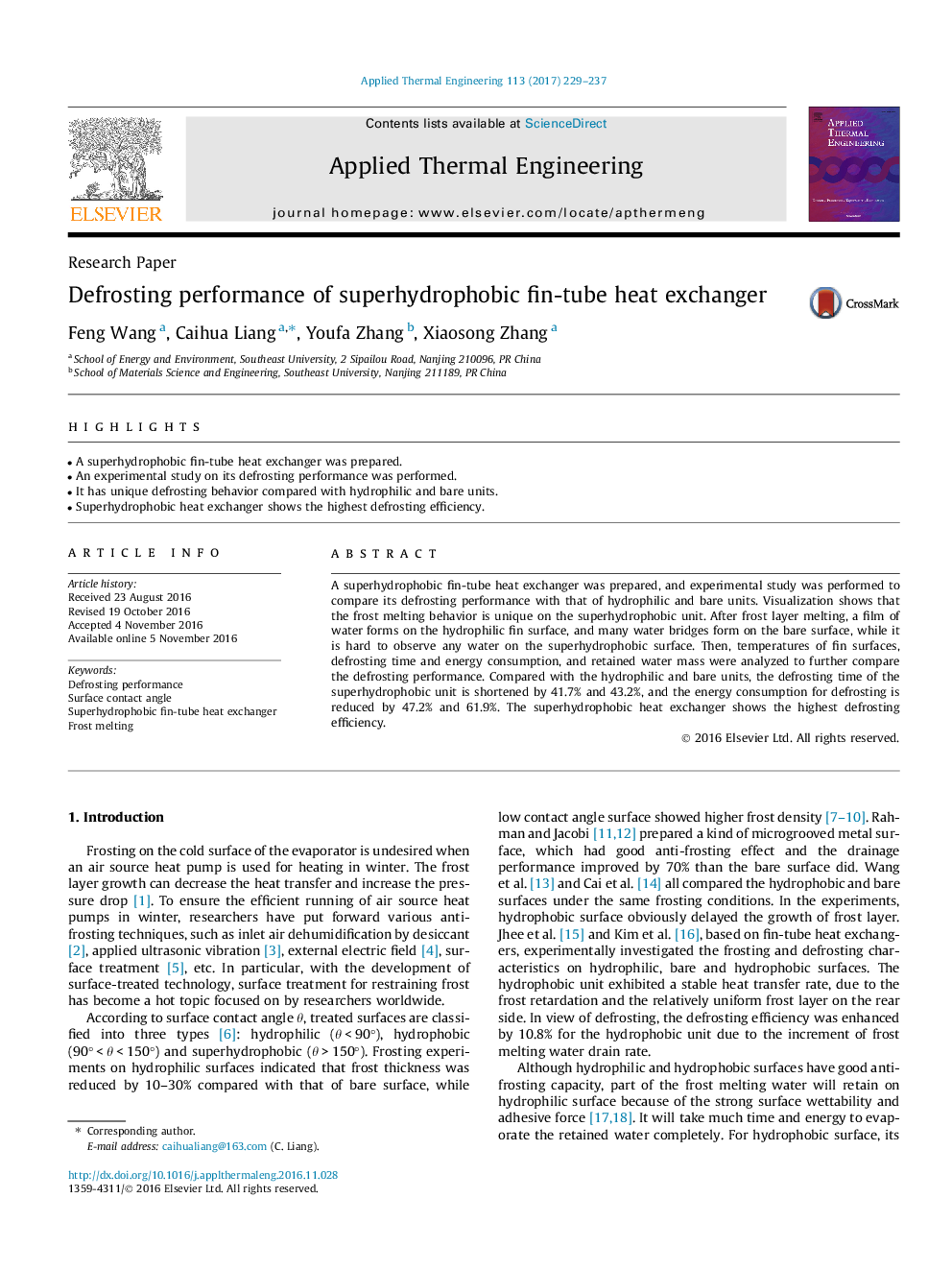| Article ID | Journal | Published Year | Pages | File Type |
|---|---|---|---|---|
| 4991800 | Applied Thermal Engineering | 2017 | 9 Pages |
Abstract
A superhydrophobic fin-tube heat exchanger was prepared, and experimental study was performed to compare its defrosting performance with that of hydrophilic and bare units. Visualization shows that the frost melting behavior is unique on the superhydrophobic unit. After frost layer melting, a film of water forms on the hydrophilic fin surface, and many water bridges form on the bare surface, while it is hard to observe any water on the superhydrophobic surface. Then, temperatures of fin surfaces, defrosting time and energy consumption, and retained water mass were analyzed to further compare the defrosting performance. Compared with the hydrophilic and bare units, the defrosting time of the superhydrophobic unit is shortened by 41.7% and 43.2%, and the energy consumption for defrosting is reduced by 47.2% and 61.9%. The superhydrophobic heat exchanger shows the highest defrosting efficiency.
Related Topics
Physical Sciences and Engineering
Chemical Engineering
Fluid Flow and Transfer Processes
Authors
Feng Wang, Caihua Liang, Youfa Zhang, Xiaosong Zhang,
